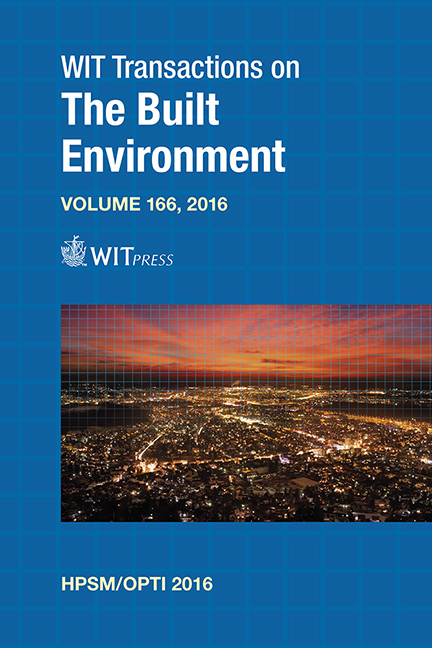Influence Of Water Absorption On The Fiber/matrix Interfacial Shear Strength Of Glass Fiber Reinforced Degradation Controlled PLA Model Composite
Price
Free (open access)
Transaction
Volume
166
Pages
9
Page Range
361 - 369
Published
2017
Size
457 kb
Paper DOI
10.2495/HPSM160341
Copyright
WIT Press
Author(s)
K. Tanaka, A. Inagaki, M. Miyamura, T. Katayama, S. Yoshikawa, T. Katayama
Abstract
Glass fiber reinforced plastics (GFRP) have many superior mechanical properties, such as high-specific strength and high-specific stiffness, and inexpensiveness compared with CFRP. Since the traditional matrix of GFRP such as epoxy, is not decomposed in the natural environment, polylactic acid (PLA), which is a plant-derived and biodegradable resin, has been receiving attention as an environmentally friendly material. Although good durability is required as in normal petroleum-based plastics when PLA is used for a matrix of FRP, PLA is expected to decompose quickly at the end of its lifetime. However, since the decomposition rate of PLA in the natural environment is very slow compared with other biodegradable resins, it is difficult to process a large amount of PLA in the natural environment. Recently, a method to control the rate of degradation of PLA has been developed by combining a decomposition accelerant and a degradation inhibitor with PLA. However, the influence of water absorption on the mechanical properties of PLA as the matrix of fiber reinforced composite materials has not been clarified yet. In this study, single fiber pull-out tests were conducted to clarify the influence of water absorption on the fiber/matrix interfacial shear strength of glass fiber reinforced degradation controlled PLA. The degradation inhibitor and the degradation accelerator are considered to suppress and accelerate the decomposition of PLA hydrolysis by water absorption respectively. The fiber/matrix interfacial shear strength of water absorbed specimens made with PLA resin blended with degradation accelerator were almost the same as that of PLA. Although the fiber/matrix interfacial shear strength of the dry specimens made with PLA blended with degradation inhibitor was smaller than that of PLA, there is no reduction by water absorption for the specimens made with PLA blended with degradation inhibitor.
Keywords
PLA, glass fiber reinforced composites, water absorption, single fiber pull-out test, fiber/matrix interfacial strength, decomposition accelerant, degradation inhibitor





